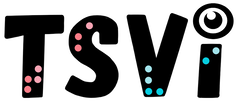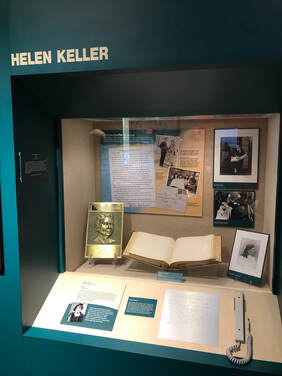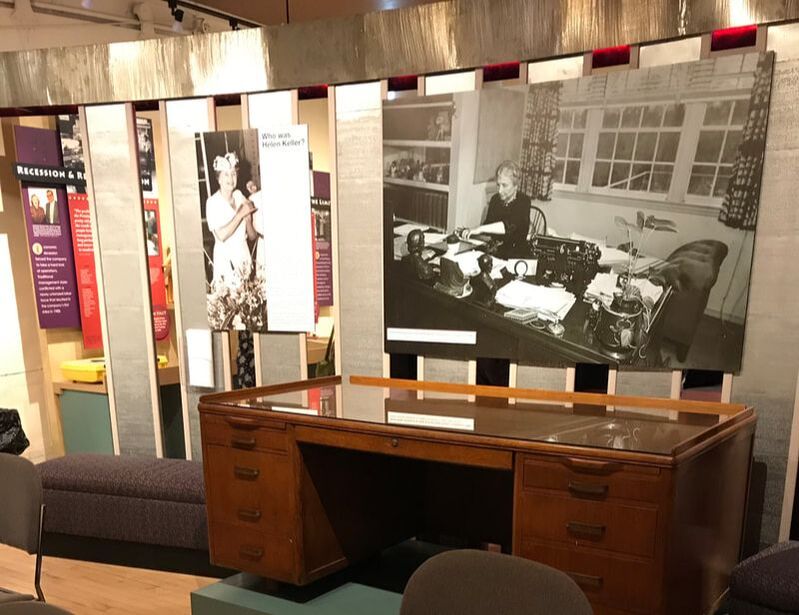- Home
-
Learn
- History of VI >
- Legislation & Laws >
- Vision Professionals >
-
VI Program Resources
>
- Program Printables
- Itinerant Teaching Tips
- Year at a Glance
- VI Program Handbook
- Caseload Analysis
- Organization & Time Management
- Professional Development
- Teacher Standards
- Professional Ethics
- Awards & Recognition
- APH Scholar Program
- Professional Organizations
- Certification Organizations
- Dealing with Challenges
- Professional Publications >
- Relatable Books for All Ages >
- Family Resources >
- Plan
- Basics
-
Teach
- Teaching Strategies >
-
Compensatory Skills Instruction
>
-
Social Skills
>
-
Self Determination
>
- Body Image & Acceptance
- Making Personal Goals
- My Vision Presentation
- My Self-Description
- Create a Personal Data Sheet
- Disclosure Decision
- Disability Statement
- Requesting Help
- Fighting Fears
- My Circle of Support
- Personal Responsibility
- Advocate for Safe Enviroments
- Having Picture Taken
- Coping with Change
- Aging Eyes
- Physical Characteristics
- Political Activism
- Laws Regarding Persons with Disabilities
-
Sensory Efficiency
>
-
Independent Living
>
- Orientation & Mobility Instruction >
- Recreation & Leisure >
-
Career & Vocation
>
-
Grow
- Complete Set Bonus >
-
Recorded Presentations
>
- Webinar: Tips for Being a "Physically Fit" TVI
- Webinar: The Art of Teaching the ECC
- Webinar: Virtual & F2F Strategies
- Webinar: Foundations of Teaching the ECC in the Age of Virtual Instruction
- Webinar: Itinerant Teaching Strategies
- Webinar: Using Themes to Teach the ECC
- Webinar: Conducting a FVLMA
- Webinar: Selecting the Right AT
- Webinar: Developing SMARTER Goals
- Webinar: Determining Service Intensity Using the VISSIT
- Webinar: Activities to Teach the ECC
- Webinar: Accessible Content for BLVI
- Webinar: Accommodations for VI
- Webinar: MIMO Strategies & Activities
- Webinar: SIDPID Strategies & Activities
- Webinar: Standard Course of Study Strategies & Activities
- Webinar: Job Tasks for Job, Career & Life
- Shop
- Jobs
Helen KellerBy: Carmen Willings
teachingvisuallyimpaired.com Updated June 7, 2022 Although there are a number of famous people who were blind, Helen Keller is by far one of the more well known. Most people are familiar with her story from early childhood and the illness that left her both deaf and blind, but less are familiar with her later life that included contributions to the field of blindness that continue to impact people with visual impairments today. Her story is one of overcoming overwhelming odds and becoming an inspiring person for many.
Helen Adams Keller was born on June 27, 1880 in Tuscumbia, Alabama. Helen was born with the ability to see and hear, but when she was 19 months old, she contracted an illness that is speculated to have been scarlet fever or meningitis. It was simply referred to as "an acute congestion of the stomach and the brain". Mrs. Keller had heard of the successful education of another woman who was deaf and blind named Laura Bridgman. The Keller's sought advice from Dr. J. Julian Chisolm in Baltimore who referred them to Alexander Graham Bell, who was working with children who were deaf. Bell in turn referred them to the Perkins Institute for the Blind in Boston. The school's director, Michael Anagnos, asked a former student, Anne Sullivan, to become Helen's teacher.
Anne Sullivan began working with Helen at the Keller's house in March 1887. She began to teach Helen to communicate by spelling words into her hand. Much has been written about Helen's early childhood and her tantrums and "wildness". As Anne Sullivan was able to help Helen begin to learn and understand more about her world, Helen became more cooperative. The Miracle Worker is a famous dramatic work derived from her autobiography, The Story of My Life. In May 1988, Keller attended the Perkins Institute for the Blind. She left in 1891 after being accused of plagiarism. She had written a story called "The Frost King" and given it as a gift to the Perkins director, Michael Anagnos. It was published, but then brought to Perkins attention that it was very similar to another story that had been published. She went on to attend the Wright-Humanson School for the Deaf and the Horace Mann School for the Deaf in New York. She returned to Massachusetts to attend The Cambridge School for Young Ladies and then attended Radcliffe College where she graduated from in 1904. She became the first person who was both deaf and blind to earn a Bachelor of Arts degree. Helen learned to speak and spent much of her life giving speeches and lectures. She would "read" people's lips with her hands in order to "hear" what they were saying. She was also able to communicate through braille and by reading sign language in her hands. Following graduation, Keller went on to become a world-famous speaker and author. Although I do not share all of her religious and political views (e.g. she was a radical socialist and member of the Socialist Party and followed the teachings of Emanuel Swedenborg, a mystic and "Christian" theologian born in 1688 who believed the second coming of Jesus Christ has already taken place), I do feel she did an amazing work in respect to being an advocate for people who are blind by raising awareness of blindness and the need for preventative measures. She was instrumental in changing the public perception of people with visual impairments. She pushed for changes in the law to ensure all people were treated with dignity and respect. She devoted much of her time to raising funds for the American Foundation for the Blind. She also founded the Helen Keller International organization in 1915. The organization is devoted to research in vision, health and nutrition. She also helped to found the American Civil Liberties Union (ACLU). She was devoted to humanitarian efforts that included the rights of women and the rights of people with disabilities. Keller met every U.S. president from Grover Cleveland to Lyndon Johnson. Her contributions have made a significant impact on the field of visual impairments and subsequently helped many worldwide who are blind or visually impaired. Helen Keller died in her sleep on June 1, 1968, at her home in Easton, Connecticut. Learn more About Helen KellerHelen Keller International is devoted to saving the sight and lives of the most vulnerable and disadvantaged. They combat the causes and consequences of preventable blindness and malnutrition by establishing programs based on evidence and research in vision, health and nutrition.
Helen Keller's AutobiographiesKeller, Helen. The Story Of My Life: With Her Letters (1887-1901) And A Supplementary Account of Her Education, Including Passages From the Reports And Letters Of Her Teacher, Anne Mansfield Sullivan. This is a reproduction of a book published before 1923. The book has occasional imperfections and missing and blurred pages due to the scanning of the original artifacts that weren't always of best quality.
Keller, Helen. Helen Keller: The Story of My Life. All the familiar stories, and some less known, are included in this autobiography. This memoir offers an unforgettable portrait of one of the outstanding women of the twentieth century.
Keller, Helen. The World I Live In. In this autobiography, Helen describes her sensations and the workings of her imagination, while making the argument that the whole spectrum of the senses lies open to her through the medium of language. This edition includes her early essay "Optimism," as well as her first published work, "My Story," written when she was twelve.
Books About Helen KellerAlthough there are a number of famous people who were blind, Helen Keller is by far one of the more well known. Most people are familiar with her story from early childhood and the illness that left her both deaf and blind, but less are familiar with her later life that included contributions to the field of blindness that continue to impact people with visual impairments today. Her story is one of overcoming overwhelming odds and becoming an inspiring person for many. The following books are about or by Helen Keller.
Adler, David A. A Picture Book of Helen Keller (Picture Book Biography). Holiday House, 1992. Ages 6 and up. The biography of Helen Keller who became both blind and deaf. The story of her childhood, how Annie Sullivan taught her and the impact and achievements she made.
Davidson, Margaret. Helen Keller. This bestselling biography of Helen Keller tells how, with the commitment and lifelong friendship of Anne Sullivan, she learned to talk, read, and eventually graduate from college with honors.
Garrett, Leslie. Helen Keller: A photographic story of a life. This biography of Helen Keller provides full-color photographs of Helen, as well as places, artifacts, definitions of key words and sidebars on related subjects.
Graff, Stewart. Helen Keller (Young Yearling Book). This biography of Helen Keller is written for children ages 8 to 12. Like others, it tells the story of Helen Keller and Annie Sullivan.
Hurwitz, Johanna. Helen Keller: Courage in the Dark (Step-Into-Reading, Step 4). The story of Helen Keller is brought into a beginner reader level through this book.
Lawlor, Laurie. Helen Keller: Rebellious Spirit. This biography of Helen Keller is written for children ages 10 and up. Like other biographies, it tells the familiar story of Helen Keller. However, Lawlor also includes lesser known information about Keller's life and views giving the reader more insight into her character.
Lundell, Margo. A Girl Named Helen Keller. Cartwheel, 1995. This book describes the early life of Helen Keller.
Norwich, Grace. I Am: Helen Keller. This biography is part of a series featuring important people from history. This biography tells of Helen's accomplishments and features illustrations, a timeline, maps, sidebars and a top ten list of important things to know about Helen Keller.
Rapporport, Doreen. Helen's Big World: The Life of Helen Keller. This picture book biography is an introduction to the story of Helen Keller for young children.
Thompson, Gare. Who Was Helen Keller. Grosset & Dunlap, 2003. This book tells the story of Helen Keller. This illustrated biography is perfect for young middle-grade readers. It includes line drawings and sidebars on related topics such as Louis Braille.
Helen Keller Display at the APH MuseumIf you are interested in learning more about Helen Keller, you should plan a trip to the APH museum in Louisville, Kentucky! Here you will find a Helen Keller display that includes her lpersonal Bible along with her writing desk.
|
History of Visual Impairments
Professional Practice
Vision Professionals
Professionalism
Teacher Resources
Professional Publications
VI Book Resources
|
|
Teaching Students with Visual Impairments LLC
All Rights Reserved |
- Home
-
Learn
- History of VI >
- Legislation & Laws >
- Vision Professionals >
-
VI Program Resources
>
- Program Printables
- Itinerant Teaching Tips
- Year at a Glance
- VI Program Handbook
- Caseload Analysis
- Organization & Time Management
- Professional Development
- Teacher Standards
- Professional Ethics
- Awards & Recognition
- APH Scholar Program
- Professional Organizations
- Certification Organizations
- Dealing with Challenges
- Professional Publications >
- Relatable Books for All Ages >
- Family Resources >
- Plan
- Basics
-
Teach
- Teaching Strategies >
-
Compensatory Skills Instruction
>
-
Social Skills
>
-
Self Determination
>
- Body Image & Acceptance
- Making Personal Goals
- My Vision Presentation
- My Self-Description
- Create a Personal Data Sheet
- Disclosure Decision
- Disability Statement
- Requesting Help
- Fighting Fears
- My Circle of Support
- Personal Responsibility
- Advocate for Safe Enviroments
- Having Picture Taken
- Coping with Change
- Aging Eyes
- Physical Characteristics
- Political Activism
- Laws Regarding Persons with Disabilities
-
Sensory Efficiency
>
-
Independent Living
>
- Orientation & Mobility Instruction >
- Recreation & Leisure >
-
Career & Vocation
>
-
Grow
- Complete Set Bonus >
-
Recorded Presentations
>
- Webinar: Tips for Being a "Physically Fit" TVI
- Webinar: The Art of Teaching the ECC
- Webinar: Virtual & F2F Strategies
- Webinar: Foundations of Teaching the ECC in the Age of Virtual Instruction
- Webinar: Itinerant Teaching Strategies
- Webinar: Using Themes to Teach the ECC
- Webinar: Conducting a FVLMA
- Webinar: Selecting the Right AT
- Webinar: Developing SMARTER Goals
- Webinar: Determining Service Intensity Using the VISSIT
- Webinar: Activities to Teach the ECC
- Webinar: Accessible Content for BLVI
- Webinar: Accommodations for VI
- Webinar: MIMO Strategies & Activities
- Webinar: SIDPID Strategies & Activities
- Webinar: Standard Course of Study Strategies & Activities
- Webinar: Job Tasks for Job, Career & Life
- Shop
- Jobs



